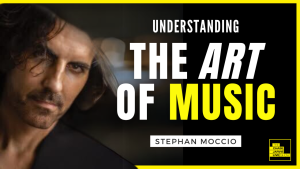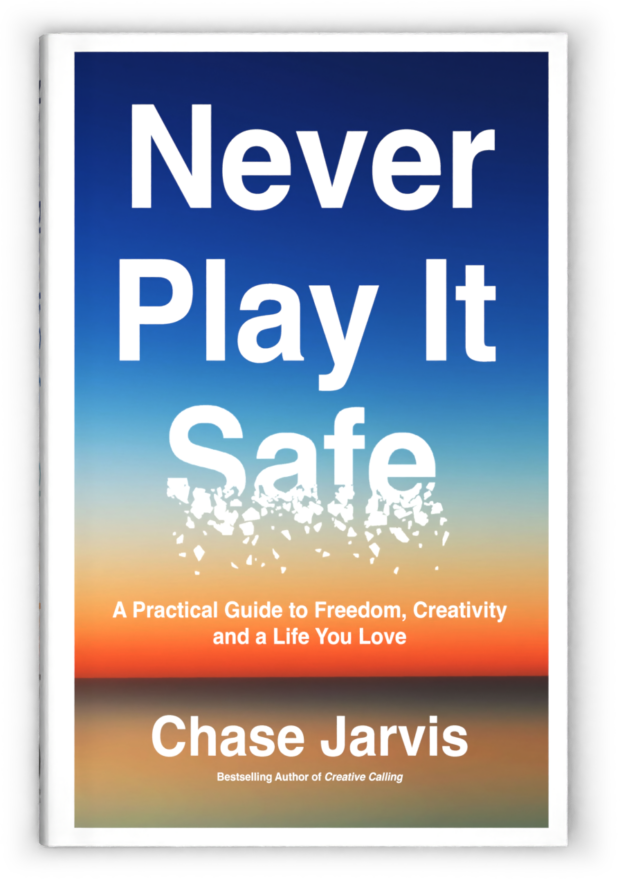The world is creative, innovative, and curious. It’s constantly inviting us to develop new ideas, improve on existing ones, and tap into endless possibilities. It’s also challenging as a creator to maintain an innovative mindset. We have so many pressures coming at us these days.
If you’ve ever wondered how great innovators delve into their endless resource of ideas, it helps to learn from the source. Award-winning designer and author Hussain Almossawi has a lot to share with us about unleashing our creative mindset.
Hussain is the founder of Mossawi Studios, he’s an award-winning designer who’s worked with great brands like Nike, Apple, Google, Electronic Arts, and others. His new book, The Innovators Handbook: A Guide To Unleashing Your Creative Mind, is a catalyst for helping creatives to develop and share our bravest work yet. Hussain is a well-respected keynote speaker and teacher of innovation and design. He’s taught at numerous universities including Parsons.
I’m asking questions to help us explore what goes into good and great innovations. We dive deep into designing for human factors, ergonomics, and design and creativity in general. We’re exploring how people relate to creative products, services, and experiences, and the role they play in development.
Every now and then innovation invites us to reinvent the wheel. To shift from making incremental changes to firing up a big idea.
Radical innovation will have us look at something in a whole new way. We find it when we get curious about the experience we’re delivering.
The Power of Iteration
It’s easy to take innovative products and ideas all around us for granted. The innovations we love today went through a lot of changes to become what they are. It’s because creators continually improve on their ideas through a powerful iterative process.
We don’t always have to make the next big thing or reinvent the wheel. We can improve a concept, design, and product. Sometimes innovation is quieter than a redefining moment. Sometimes it’s as simple as making improvements to something existing and making it better.
The repetitive process of creating, testing, and tweaking an idea, improves it. We see this in the evolution of the handheld phone. From the 80s Motorola’s design through to the early 2000s 3G Nokia, had the same concept. Phone design saw continuous tweaks and improvements. Generally, all phones were very similar in form and function with no big changes. That is until the iPhone emerged in 2007.
The Intersection of the Unrelated
The process of innovation requires baby steps. These incremental moments improve the idea one step at a time. The intersection of the unrelated may be the thing that drives our biggest idea forward. We can consider the possibilities rather than the probabilities.
The iPhone brought a fundamental change to what we all considered to be the handheld phone. In the beginning, the first design went through many iterations. It was when Steve Jobs considered two unrelated inventions. Engineers at Apple were exploring Fingerworks iGesture Pad. The touchscreen research was sidelined at the time. Apple acquired SoundJam, which is now known as iTunes. Steve Jobs considered the question, what if this is the phone? It’s this unconventional thinking and questioning that moved things forward. Getting rid of the notion of what we all thought a phone was, and being willing to ask “what if?” changed the world.
The first iPhone creation is a great example of how we can find intersections of unrelated things, learn where they meet, and bring them together to create massive change. Apple didn’t have to invent the touchpad or MP3 technology. They acquired it. Then, they incorporated it into their design, tested it, and tweaked it.
Every Failure is a Learning
Innovation is about bringing your ideas to life even when it feels like they won’t work. Even when they don’t work. We get to use the challenges and the skeptical thoughts as fuel to begin looking at our projects from new angles. New angles move us closer to true innovation. Through this process of trial and error, we also develop our willingness to fail.
Learning to fail is a gift. I asked Hussain about this, he shared some great examples with us about failing. Listen in on our discussion, and you’ll see how the great innovators have honed the skill of failing.
Hussain has learned the art of rejection. He’s heard the word “No” more than 80 times. He’s learned that rejection is about having the right mindset. He’s also learned that it develops the right mindset.
Learning to accept failure and using it develops our persistence. We get to ask ourselves, “How far am I willing to go to get what I want?”
Hussain’s book, The Innovators Handbook: A Short Guide to Unleashing Your Creative Mindset is made for this. He wrote with the intention of helping creatives to push their boundaries and flex their courage.
View this post on Instagram
What if we take failure and learn to use it? With the mindset of fearless innovation everything changes. If it weren’t for failure, the world would be super boring.
FOLLOW HUSSAIN:
instagram | twitter | website






















